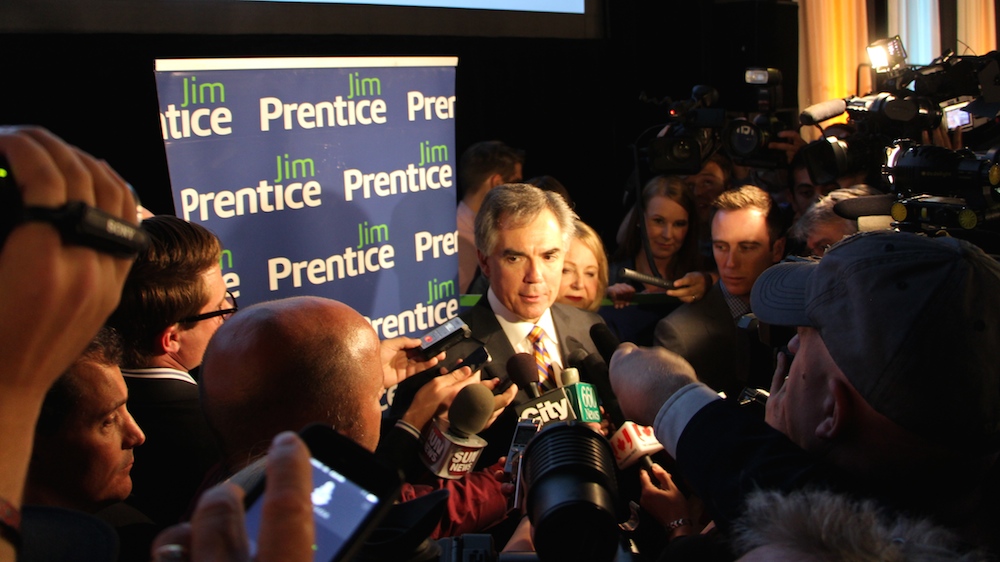The Spring session of the Alberta Legislature ended yesterday after forty-days of debate.
The evacuation of more than 88,000 Albertans sparked by the wildfires in Fort McMurray dominated the attention of our political leaders during this session. In response to the wildfire crisis, Premier Rachel Notley and Wildrose leader Brian Jean briefly put aside politics and demonstrated their strengths as political leaders. It was a refreshing break from the negative rhetoric and hyperbole that has come to dominate Alberta politics.
The legislative session produced ejections, MLA suspensions and other intrigue but amidst the budget debates and political drama the New Democratic Party government pursued a fairly ambitious legislative agenda.
Twenty-one government bill and one two private members’ bills were passed during this session.
Bill 205: Pharmacy and Drug (Pharmaceutical Equipment Control) Amendment Act, a private members’ bill introduced by Calgary-West Progressive Conservative MLA Mike Ellis received unanimous support from MLAs when it was passed in the Legislature. The bill restricts ownership of pill presses in response to the Fentanyl crisis.
Bill 1: Promoting Job Creation and Diversification Act introduced by Economic Development and Trade Minister Deron Bilous gave the minister new powers to create programs focused on broadening the province’s industries and businesses. “Jobs” and “diversification” were key buzzwords used by NDP cabinet ministers this spring as they face an increase in unemployment and decrease in industry investment caused by the decline of the international price of oil.
Bill 4: An Act to Implement a Supreme Court Ruling Governing Essential Services introduced by Labour Minister Christina Gray lifted the ban on strikes by all public sector employees in response to a Supreme Court of Canada ruling in 2015.
Bill 7: Electoral Boundaries Commission Amendment Act introduced by Justice Minister Kathleen Ganley pushed forward the timelines to redraw the electoral boundaries before the provincial election in 2019, which could have an impact on the results of that election. The timelines as they were previously legislated were askew after the Progressive Conservatives called an election one year earlier than Alberta’s fixed-election date law in 2015.
The NDP missed an opportunity to improve the composition of the commissions, which will include five appointees (two appointed by the Government Caucus, two by the Official Opposition and one “neutral” chairperson chosen by the government). The NDP should have amended the legislation to create a non-partisan judicial commission similar to the ones appointed to redraw federal electoral boundaries.
Introduced by Finance Minister Joe Ceci, Bill 10: Fiscal Statutes Amendment Act removed the 15 per cent debt-to-nominal-GDP cap implemented by the NDP in the fall session of 2015. This was a classic example of a government walking back on a law which they probably should not have passed in the first place. The Alberta government’s net-debt levels remain low enough that Albertans should not immediately be worried. But as our provincial credit ratings have been downgraded, it will be important for the current and future governments to implement policies that will actually address the government’s significant revenue shortfall and growing budget deficit.
Bill 11: Alberta Research and Innovation Amendment Act reorganized Alberta’s four “Innovates” branded research and development agencies into one agency governed by a single board and CEO. Bill 18: An Act to Ensure Independent Environmental Monitoring dissolved the Alberta Environmental Monitoring Evaluation and Reporting Agency and brought its responsibilities into the Department of Environment and Parks. Bill 11 also established the position of Chief Scientist.
Bill 15: An Act to End Predatory Lending introduced by Service Alberta Minister Stephanie McLean targeted the payday loan industry, bringing down the amounts paid on payday loans from $23 per $100 borrowed down to $15 per $100. Ms. McLean announced that the government is working with credit unions to offer short-term loans as an alternative to predatory loans.
Bill 19: Reform of Agencies, Boards and Commissions Compensation Act injected transparency into Alberta’s byzantine system of appointed agencies, boards and commissions that had become a safe-haven for PC Party loyalists, patrons and retired MLAs during the previous government’s 44 years in power.
A long-time coming, Bill 21: Modernized Municipal Government Act, was in the works for years, but even so it was surprising that the NDP has been able to introduce it so early in their mandate. Bill 21 overhauls and updates sections of the province’s second largest piece of legislation. Municipal Affairs Minister Danielle Larivee, a rising-star in the NDP, will travel across the province this summer to consult with municipal leaders about the changes proposed in this bill, which only passed first reading during this session.
Bill 21 sets the ground for the creation of Big City Charters in the Act’s regulations, as advocated for by Edmonton Mayor Don Iveson and Calgary Mayor Naheed Nenshi. The Charters are expected to be drafted by Spring 2017 and enacted by Summer 2017.
The NDP government’s flag ship piece of legislation of spring 2016 was Bill 20: Climate Leadership Implementation Act. Part of the much-lauded Climate Leadership Plan, Bill 20 implements the Carbon levy and rebate program. In what is becoming a signature move of the NDP government, Environment and Parks Minister Shannon Phillips assembled an impressive coalition of municipal, industry and environmental leaders in support of the new law.
While there are legitimate criticism of the bill, including whether the carbon levy is actually “revenue neutral,” the Wildrose Opposition failed to offer any alternative plan. The Official Opposition was knee-capped by a serious self-inflicted wound when an article signed by nine Wildrose MLAs compared carbon pricing to Holodomor, the genocide that killed an estimated 2.5–7.5 million Ukrainians in the Soviet Union from 1932 to 1933. Lac La Biche-St. Paul-Two Hills MLA Dave Hanson apologized for the comment but the nine MLAs avoided answering questions about the genocide comparison when asked by the media.
Alberta’s Legislative Assembly is expected to reconvene on October 31, 2016 and sit until December 1, 2016.
[Note: This was just a brief description of some of the bills debated and passed during the spring session. A full list of bills debated in this session can be found here]


